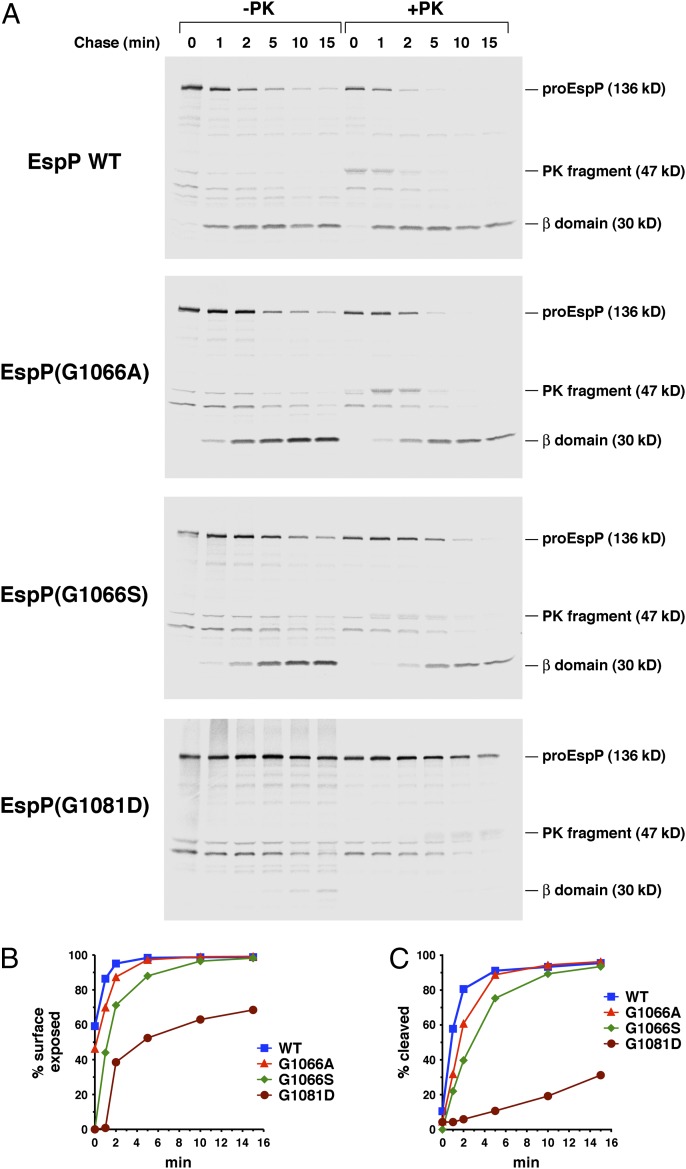Fig. 3.
Mutation of EspP residues 1066 and 1081 delays the initiation of passenger domain translocation. (A) AD202 transformed with pRLS5 (Ptrc-espP) or a pRLS5 derivative encoding the indicated EspP mutant were subjected to pulse-chase labeling after the addition of IPTG. Half of the cells were treated with PK, and immunoprecipitations were peformed use the C-terminal anti-EspP antiserum. The percent of the passenger domain that was surface exposed or released by proteolytic cleavage in A is shown in B and C.

